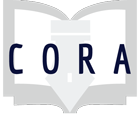Searching for information in library resources is often like exploring a new land. You often won’t find what you're looking for the first time you search. Complete this tutorial to learn strategies for rethinking your search for better results.
Assignments
Library databases work differently from Google. Learn how to create a search strategy for these databases.
Understand the difference between primary and secondary sources, and between popular and scholarly sources.
Annotated bibliographies have become a popular assignment in college courses and a way to scaffold research papers. Gathering a bibliography before turning in a completed research project allows students to focus on searching strategically and get feedback on the sources they obtained. Annotating that bibliography requires them to think critically about the sources they choose and their relationship to the research at hand.
This scaffolded assignment was developed for senior Dietetic students enrolled in a research methods course. The lessons were collaboratively created via a librarian-faculty partnership.
A toolkit with various instructional materials to teach media and news literacy. Includes an online activity "Fairness and Blanace" where students watch a short video on journalistic standards and answer discussion questions. Then, students can take one or both interactive tutorials on "Lateral Reading" with a focus on fact-checking and/or "Evaluating Information" based on an information need.
We use Google every day, but we do really understand why we get certain results? This event will explain what an algorithm is, how search engines use them, and how bias exists in our search results. Attendees will have a chance to reflect on the ways biased results can echo larger biases for representation in society. Access this site at your convenience at: https://jmu.libwizard.com/f/algorithms-bias
Co-creators: Malia Willey and Alyssa Young.
In this hands on activity, students will find and compare/contrast news stories on a single current event/topical discussion to learn the importance of lateral reading and understand how bias can influence information production.
This assignment was created to help undergraduate students use research articles to help inform their argument about a "text." This exercise has been used in library instruction sessions for art history, composition, english literature, women's studies, and history classes. After reflecting on what they know about a text (or image or multimedia), brainstorming search terms, and tracking relevant patterns in search results, students can synthesize information from a variety of sources in an organized, methodological fashion.
Reading charts and infographics is part of everyday life, yet telling a story with data can be tricky. Luckily, data visualization is a skill that everyone can learn! Data visualization is the practice of translating information into a visual context, helping humans understand complex concepts and making it easier to identify patterns and uncover insights. In this workshop, learn the basics of designing data visualizations, selecting appropriate graph styles, and how to identify misleading data visuals.
